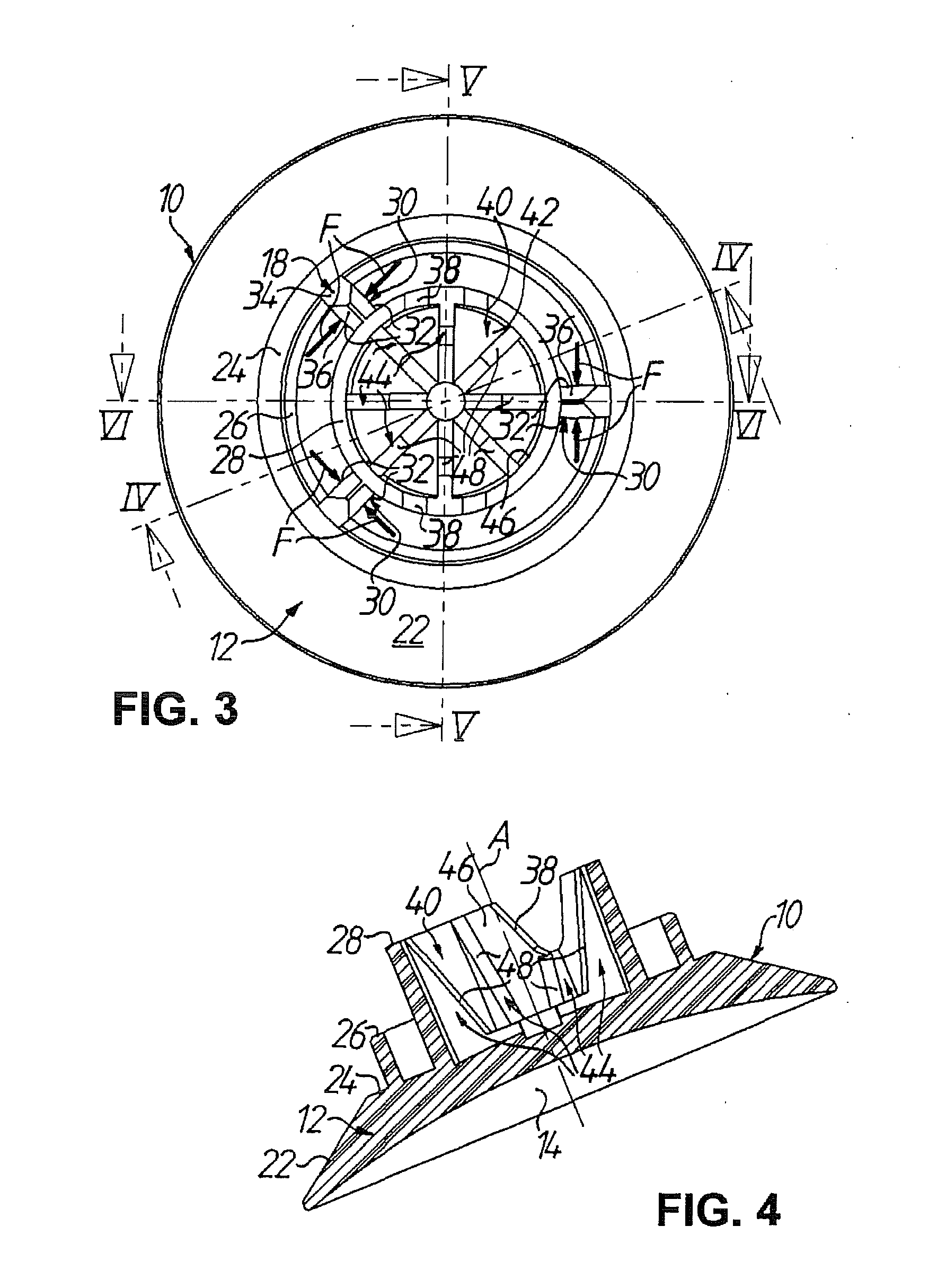Block Piece for Holding an Optical Workpiece, in Particular a Spectacle Lens, for Processing Thereof, and Method for Manufacturing Spectacle Lenses According to a Prescription
a technology for spectacle lenses and workpieces, applied in the field of workpiece support blocks, can solve the problems of time-consuming and laborious manual operations, the proposed lens block is not intended or suitable for coating processes, and the particular vacuum coating process, etc., and achieves the effects of reducing cost, high optical quality, and producing more quickly
- Summary
- Abstract
- Description
- Claims
- Application Information
AI Technical Summary
Benefits of technology
Problems solved by technology
Method used
Image
Examples
Embodiment Construction
FIGS. 1 to 6 show a block piece 10 for holding an optical workpiece, in particular a spectacle lens blank B (cf. FIGS. 7 and 8), for processing thereof. The block piece 10 comprises a basic body 12 that has a workpiece mounting face portion 14 against which the spectacle lens blank B can be blocked by means of a blocking material 16 (see FIG. 8), preferably a UV and / or VIS curable adhesive blocking composition as disclosed in the earlier European patent application 07 013 158.6 by the same applicant. The basic body 12 of the block piece 10 further comprises a clamping portion 18 via which the spectacle lens blank B blocked on the basic body 12 can be fixed in a machine or apparatus for processing (i.e. surfacing, coating, edging, tinting, cleaning, etc., as the case may be) of the spectacle lens blank B.
As to the material of the basic body 12 that allows the block piece 10 to be used in vacuum thin film coating processes, reference is made to the introductory portion of the descript...
PUM
 Login to View More
Login to View More Abstract
Description
Claims
Application Information
 Login to View More
Login to View More - R&D
- Intellectual Property
- Life Sciences
- Materials
- Tech Scout
- Unparalleled Data Quality
- Higher Quality Content
- 60% Fewer Hallucinations
Browse by: Latest US Patents, China's latest patents, Technical Efficacy Thesaurus, Application Domain, Technology Topic, Popular Technical Reports.
© 2025 PatSnap. All rights reserved.Legal|Privacy policy|Modern Slavery Act Transparency Statement|Sitemap|About US| Contact US: help@patsnap.com



